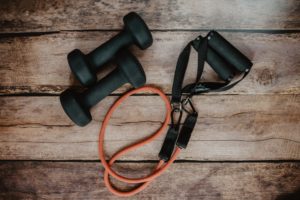 People used to think that osteoporosis was an inevitable part of aging. Today we know a lot more about how to prevent, detect and treat this disease. Osteoporosis prevention should ideally begin in childhood, but it shouldn’t stop there. Whatever your age, the habits you adopt now can affect your bone health for the rest of your life. You are never too young or too old to take care of your bones.
People used to think that osteoporosis was an inevitable part of aging. Today we know a lot more about how to prevent, detect and treat this disease. Osteoporosis prevention should ideally begin in childhood, but it shouldn’t stop there. Whatever your age, the habits you adopt now can affect your bone health for the rest of your life. You are never too young or too old to take care of your bones.
“Despite its ‘hard’ exterior, bone is not frozen in time but rather always changing,” says Ella Rosenbloom, MD, Endocrinologist at Mather Endocrinology. Throughout your life, you are constantly losing old bone while you make new bone. When the body digests nutrients like calcium, vitamin D and potassium, it creates bone mass. “As we age this system can deteriorate. However, there are some things that we can do to help ourselves,” Rosenbloom says. Good lifestyle habits, like exercise and balanced nutrition, can help you protect your bones and decrease your chances of getting osteoporosis.
If you’ve already been diagnosed with osteoporosis, or if you’ve already had a fracture, you may think that avoiding exercise is the right thing to do out of fear of breaking another bone. However, staying active and continuing to exercise is key to strengthening bones and preserving your mobility. If you’ve already suffered a fracture, your risk of sustaining another is higher. That’s why it’s so important to lessen your chances by trying to increase your bone density and prevent falls through exercise.
Focusing on exercises that promote balance, strength and resistance training reduce your chances of falls and fractures. Try working some of these exercises into your workout plan:
- Weight bearing exercises. This means walking, climbing the stairs, playing tennis, dancing, and more. Basically, it’s any physical activity that forces your body to hold up your own weight, working against gravity to strengthen your bones.
- Muscle strengthening exercises. You can use your own body weight, weight machines, free weights and resistance bands to build muscle.
- Balance exercises. Try tai chi or yoga to improve your balance and ability to hold yourself upright to prevent falls.
- Flexibility exercises. Keeping your muscles and joints limber through yoga and stretching will help you maintain and increase your mobility.
Try mixing up your routine to incorporate a variety of these exercises into your workout plan to strengthen all different parts of your body. If you don’t already have an exercise regimen, it’s not too late to start. Talk to your doctor about what kind of exercises are appropriate for you. They may refer you to a physical therapist of professional trainer so they can help you build a workout plan that’s right for your overall health and fitness level.
Remember, exercise is just one component in osteoporosis prevention and care. Good lifestyle habits can help you protect your bones and decrease your chances of fractures. Start with these simple lifestyle changes:
- If you smoke, quit
- Limit alcohol consumption
- Eat a healthy diet rich in calcium and vitamin D
- Get at least 30 minutes of physical activity each day
- Talk to your doctor about your care plan, including any recommended pharmacologic treatments and appropriate bone density screenings

